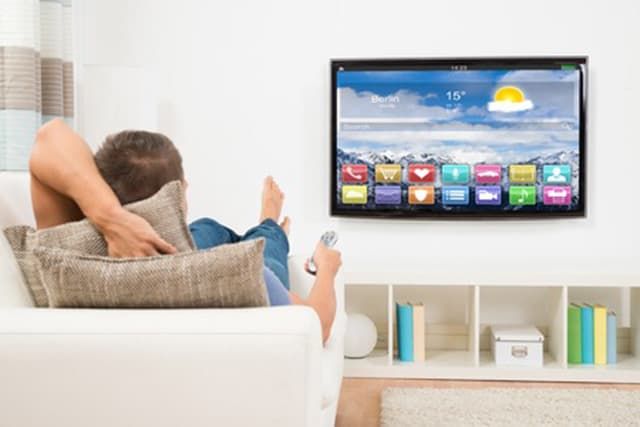Short for “attention deficit hyperactivity disorder,” ADHD is a medical condition that strikes plenty of kids. It’s characterized by a brain disorder that shortens the attention span of a child, but the problem is way deeper and more complex than that.
Parents of children who have ADHD often find themselves overwhelmed trying to find solutions to improve the lifestyle of their kids. It seems that weighted blankets might be a beneficial product for children to have ADHD, but how does this work, exactly?
Discovering ADHD
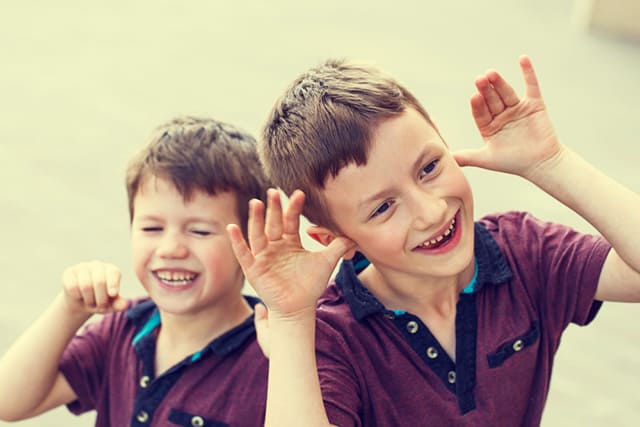
- Children who have this medical condition are very impulsive. That means they rarely think before active, and do most things out of pure instinct. They have little to no patience when it comes to waiting or interacting with other people, and some of them even have aggressive tendencies, shoving and pushing other people around.
- ADHD is also characterized through some form of rebellion. Kids that have ADHD will often do or grab things without asking for permission, and are likely to put themselves in danger because of their impulsive acts. They also tend to overreact in different situations, through aggressive and intense emotional reactions.
- Probably the most common trait of children with ADHD is the fact that they get easily distracted. They get bored really quickly of doing something, and have a very short attention span, which causes trouble in learning new things. They will rarely finish what they start, and never listen to what they are being told all the way through. They are also forgetful and misplace their things often.
- Kids with ADHD are also hyperactive, meaning they can’t stay out for too long. They also tend to be very noisy in what they do, because they have so much energy bottled up. They will often end up being a distraction to the others around them.
Even so, there is a thin line between having ADHD and a normal stage of child growth. As you know, children develop abilities such as self-control or respect for others as they grow up, which makes it even more confusing for parents to tell if their child actually has an attention disorder or is just goofing around.
What Leads to ADHD?

In reality, this disorder has nothing to do with such factors, but is rather something that children are born with. Some of the things that could cause a child to have ADHD are:
- Hereditary factors, as ADHD can run in families.
- Bad pregnancy habits, such as smoking, alcohol, or substance abuse, infections or poor nutrition.
- Imbalanced brain chemicals.
- Changes in the brain regions that are responsible with attention.
- Brain disorders and injuries, such as frontal lobe damage.
- Toxins that could affect the development of the baby’s brain.
ADHD Diagnosis
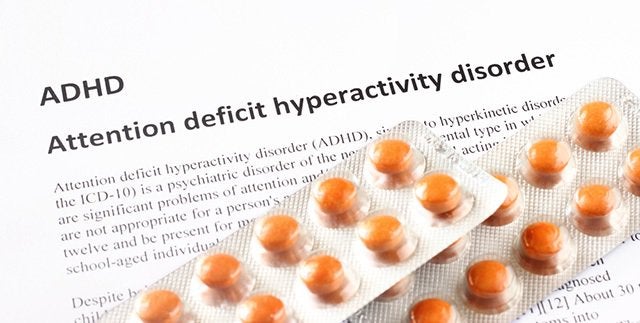
The process of diagnosing a child with ADHD begins with a series of questions about the kid’s health, activities, and behavior. In order to prepare for the appointment, parents should write down all the events that led them to suspect their child might have ADHD, and discuss them with the doctor.
Typically, children will be diagnosed with ADHD if:
- They are unusually hyperactive or impulse for their age, compared to other children.
- The ADHD-like behavior has been consistent throughout the child’s entire life.
- The behavior of the child is getting in the way of their academic performance, is disrupting other children, or affects family life.
- Any other potentially related caused has been ruled out.
Treatment for ADHD often involves medication, but also therapy and plenty of patience on behalf of the parents. Be warned that it’s important to treat ADHD because it can affect your child’s future success, thus leading to other problems such as academic failure, depression, or relationship conflicts.
Weighted Blankets for Kids
Did you know that, in the past, weighted blankets were mainly used by therapists and in psychiatry clinics? Today, there are available for purchase to the larger public, as they’re prices are really convenient and the benefits they provide are backed by scientific evidence.
Even if the are expert advising against using a 25-pound blanket on children, keep in mind that there are weighted blankets designed exclusively for children and teens. Occupational therapists often suggest that there is no harm in using the proper weighted blanket on a child, if you keep some general rules in mind.
According to one study, weighted vests improved the attention span of children with ADHD while at school with 15 percent. While the study does refer to vests, and not blankets, the principles of deep pressure stimulation applied are the same, so cross correlations allow us to make worthy comparisons between the effects of the two products.
Deep Touch Pressure Stimulation
The best and easier way to explain deep pressure touch stimulation is to think of it as massage therapy. It involves putting pressure on certain parts of the body, in order to relax the nervous system and aid in the release of serotonin.
Often referred to as the “happiness hormone” serotonin is a neurotransmitter that can activate many good mechanisms inside the body:
- It can improve a child’s mood. Scientific evidence suggests that those with low levels of serotonin are more likely to suffer from depression. Furthermore, researchers discover that low serotonin is linked to speech problems and memory loss. These cognitive impairments are particularly hazardous for a child who hasn’t developed means to cope with their emotions.
- It can help with anxiety. Serotonin is related to mood swings, anxiety and depression. Several researches have pointed out the fact that people who are unable to process serotonin efficiently are more likely to end up feeling anxious.
- It can help with insomnia. It turns out that serotonin imbalance can be the cause when you’re having trouble falling or staying asleep. There are about 40 million brain cells, and most of them are influenced by serotonin. These brain cells are responsible with a lot of different functions, ranging from the ability to learn, to the way sleep patterns are controlled.
By applying deep pressure stimulation to different areas of the body, a person can switch from the sympathetic nervous system to the parasympathetic nervous system. The former one is responsible for keeping the body alert. It is often triggered when people are facing a more difficult or stressful period in their lives.

Sadly, children who have ADHD are stuck in this sympathetic nervous system for too long, which is easily triggered because of their condition. It is also a common occurrence in children who have autism.
On the other end of the spectrum, we have the parasympathetic nervous system, which is characterized by calmness and serenity. Once this system comes into play, the heart rate slows and the muscles relax. It promotes the production of endorphins, causing you to feel better and more optimistic.
By activating a child’s parasympathetic nervous system, you can calm them down and make them feel happier about themselves.

Some children with ADHD respond to it almost immediately, while for others, longer sessions are required. By choosing the right weighted blanket, you can exert the benefits of this “hugging” therapy on your child, helping them improve their sleep pattern and calming the body down.
The Right Way to Use Them
The importance of knowing how to use a weighted blanket for ADHD kids is crucial. While it might not seem like much, there were actually two deaths reported caused by the misuse of such a product.
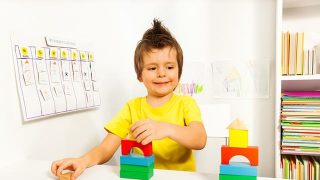
That’s why the golden rule of weighted blankets is to never cover yourself in one that’s more than 10 percent of your body weight. This rule also applies to children. If your child has a total weight of 50 pounds, a good weighted blanket should never exceed five, maximum six pounds. If you always follow this rule when looking into weighted blanket for your child, you don’t risk of crushing them under the excessive weight.
Here are some other helpful bits of information:
- Weighted blankets are of four different types. Infused weighted blankets are made from two pieces of fabric that surround the weights. The weight is evenly distributed across the surface of the product, and they are easy to fold and store when not in use. A variation is the pocket weighted blanket, meaning that the surface is divided into even squares, each with its own set of weights. Wearable weighted blankets can be used throughout the day as well, and they can be found in many fun-looking shapes (some children even use these as sleeping bags). Last, but not least, you can create your own weighted blanket, but take note that sewing the whole thing together properly prevents fill from leaking, which could pose a choking hazard.
- You should never force a child to use a weighted blanket. Instead, you can show them that it doesn’t pose a risk by putting it on yourself first. If the child feels any pain while under the blanket, take it off immediately. You don’t want your child to associate a weighted blanket with a negative experience.
- The very first time you want to put a weighted blanket on your child, make sure you start slowly, and always moving from the feet up. Remember to ask for feedback, to make sure they aren’t experiencing any discomfort.
- If you want to help your child get used to the blanket, try to put it on their shoulders during the day. For instance, it could calm them down to watch TV, eat a bowl of popcorn, and have the weighted blanket hanging on their shoulders. It’s a nice experiment to try, provided your child isn’t resistant to the idea.
Product Examples
Gone are the days when weighted blankets were a scarce thing. If your child suffers from ADHD and you’ve tried everything (but the kitchen sink), weighted blankets are actually an affordable solution worth taking into consideration. The fact that they can also be used during the day can help your child calm down during one of their hyperactivity episodes, and you’re always free to return it in case it doesn’t prove itself to be efficient.
If that sounds like something you’d like to try, let’s go through some of the most popular weighted blankets for ADHD kids that parents really seem to like.
Roore Weighted Blanket
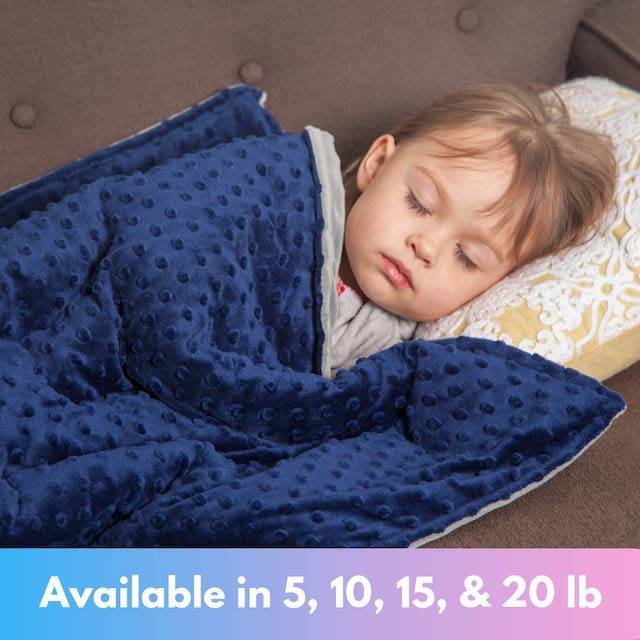
The blanket is hypoallergenic, and it features both a dotted mink duvet cover, as well as the inner blanket itself. This means that you can just remove the cover and throw it inside the washing machine, without having to clean the entire blanket. It is filled with premium glass beads that are non-toxic and odorless.
ZonLi Weighted Blanket
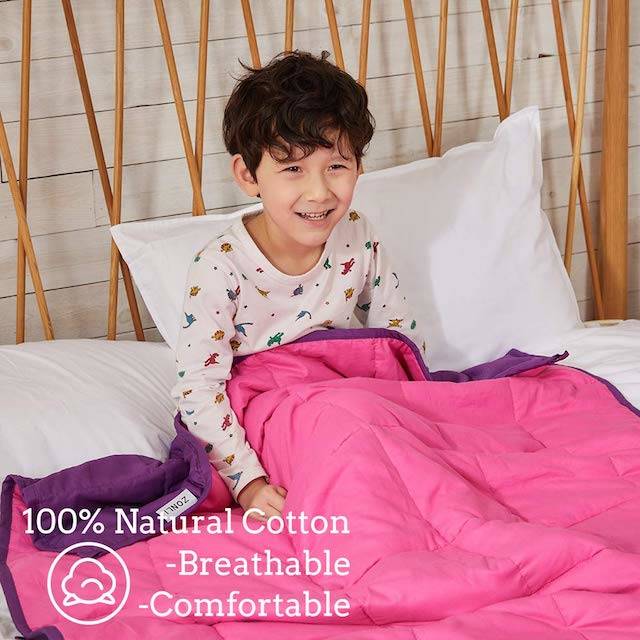
If you want to make your child grow really fond of a weighted blanket, you can opt for some really cute designs, such as prints with sheep or ducks. The smallest model available has a total weight of five pounds, but there is also a larger option, weighing in at seven pounds.
You may want to read: ZonLi Weighted Blanket Reviews
Hiseeme Weighted Blanket
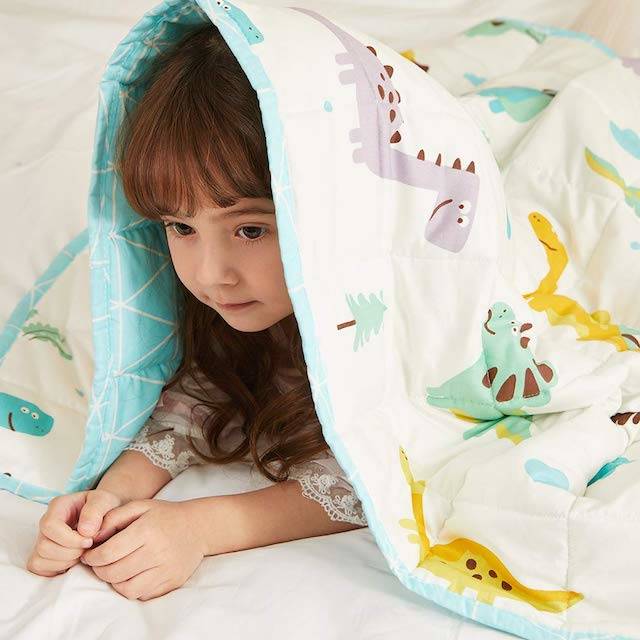
The blankets are filled with glass beads, which are non-toxic and safe to use around children. The square sticking makes for optimal weight distribution of the beads inside, while the stitches are resistant and will surely prevent glass bead spills.
Conclusion
For a very long time, it was believed that ADHD was a behavioral problem. Weighted blankets use deep pressure stimulation to help your child transition from a highly nervous and energetic state into a calmer one.
It is also proven that children who suffer from ADHD can also have sleep disorders and restless leg syndrome, both problems that are worth treating with a product as accessible as a weighted blanket. By turning down their nervous system and preventing episodes of hyperactivity, weighted blankets a drug-free option that more and more parents of children with ADHD are turning to.

